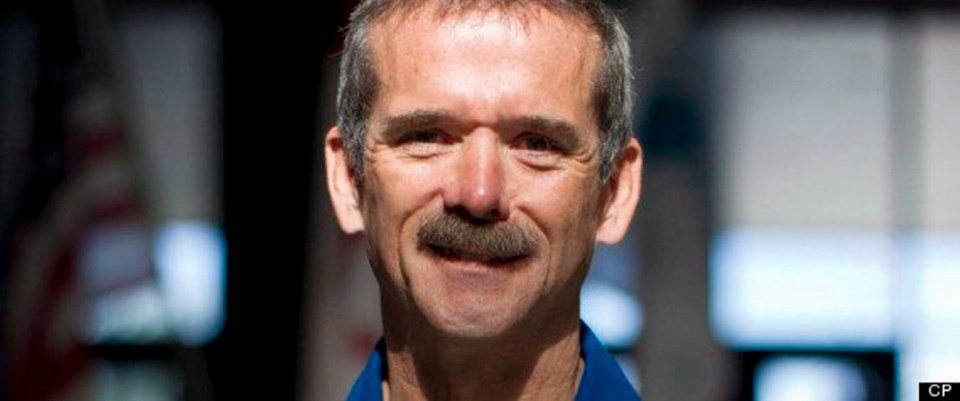For someone renowned for his forays into space, former astronaut Chris Hadfield had some decidedly down-to-earth advice for St. Michaels University School students.
“Give yourself that long-term goal in life — and, of course, it doesn’t have to be [reaching] Mars,” he said, as he wrapped up a 45-minute, big-screen Skype session this week.
“It might be that you want to be a veterinarian or you want to be a doctor or you want to an accountant, you want to be a lawyer, you want to be prime minister.”
Having a long-term goal sets you up to make more immediate choices, such as what to do tonight or on the weekend that is tied to that ultimate aim, Hadfield said.
“You can make short-term decisions that will slowly turn you into somebody else,” he said. “You are going to move your life in the direction that you love and you’re going to get more joy out of the choices that you make.”
Hadfield’s path in life went through the same Armed Forces recruiting office in Hamilton as SMUS science teacher Steve Kerr. The two roomed together while attending the former Royal Roads Military College in Colwood.
Even then, Hadfield had his philosophy about long-term vision firmly in place, Kerr said.
“He told us back then he was going to be an astronaut and we all kind of laughed about it at that time, to think that a Canadian would go into space,” said Kerr, who trained as a naval engineer and had a 14-year military career before becoming a teacher. “The fact that he went on to that goal and what he’s accomplished is pretty amazing.”
Hadfield told the students that being an astronaut involves more than going to space. “In fact, I served as an astronaut for 21 years and was only in space for six months. So 2012 years of my time as an astronaut was on Earth.”
The chance to see the planet from space was a wonder, he said, producing “a sense of awe and respect that the world is just so consistently gorgeous and spectacularly beautiful.”
The scattered lights are something to see, he said. “It’s gorgeous. It’s almost like the world is illuminated with diamonds.”
Hadfield urged the students to seek a spot at night away from the overarching lights of civilization to really appreciate the sky.
The trick is to get somewhere “truly dark” — like out on a ship or on top of a mountain, he said. That’s when the real sky appears.
“Truly look at it, look and see the thousands of points of light that make the Milky Way, look for the shooting stars.”
Hadfield, whose international fame was propelled in part by his space-station music videos, called music “absolutely fundamental to us as human beings.” His album, a collection of music that originated in space, is due out in September, with all proceeds going to music education.
“Over the course of five months during my third space flight, I recorded about 15 songs,” Hadfield said. “I wrote some of the songs completely by myself. I wrote one with my son interactively back on Earth, and I wrote some with my brother, who’s a musician — so really a nice, family project. For me, it was an important part of understanding the experience myself up there.”
One of the hard parts was playing a guitar while floating in the space station.
“For any of you guitar players in the school there, try standing on your head and playing guitar,” he said. “It’s sort of like that.”
Grade 12 student Koby Grewal said he appreciated the chance to hear from Hadfield.
“It’s really an inspiration. Moving on and going to university next year, it kind of influences what you want to do, what your aspirations are,” Grewal said. “[Hadfield] said his parents were his most influential teachers, which I can definitely relate to.”
Grewal found Hadfield’s local connection intriguing. “It was really interesting to see how he could take his lessons that he learned here in Victoria even, and take them to the International Space Station and bring them back and apply them here on Earth.”
